A dull knife just brings a lot of problems. It is impossible to beautifully cut vegetables and fruits, butcher meat or fish, chop food for a dish. However, not many people understand how to determine the cut quality. Moreover, when it comes to sharpening, most do not even know how to do it correctly in order to get a good result. Let's try to figure out all the nuances.
The content of the article
- How to determine if a knife needs sharpening
- How to prepare a knife for sharpening
-
What kinds of sharpeners are there?
- Grindstone
- Steel rod
- Mechanical sharpeners
- Electric sharpeners
- Sharpening angle of a kitchen knife
- Basic rules for sharpening
How to determine if a knife needs sharpening
Even the best quality knives dull over time with regular use. To determine if your knife needs sharpening, do a paper test. Hold a folded, but not folded sheet of newspaper by one end. You can also use a sheet of plain printer paper. Set the blade to the top edge of the sheet at a slight angle, and try to cut the newspaper. If there are uneven and sloppy edges after the knife, then most likely your tool needs to be sharpened.
How to prepare a knife for sharpening
Before you start sharpening, you should know that the only and main rule is: both the knife and the tool (with which you are going to sharpen the product) must remain clean and dry. The knife should be washed from traces of food and grease and wiped dry with a napkin. It is not recommended to start sharpening, even if the steel is at least slightly wet.
This rule does not apply to a separate type of sharpening stones - water stones, which, on the contrary, need to be moistened with water or oil to obtain a good result. However, the knife must remain dry!
What kinds of sharpeners are there?
Any tool that can be used for sharpening has its own advantages and disadvantages. Which one to choose depends only on you and on the result that you expect.
Grindstone
He's a touchstone. Made from various abrasive materials. For example, it can be ceramic, diamond-coated metal or plastic, natural stone with a fine-grained structure. Necessarily wetted with water.
Advantages:
- nice results;
- ease of use with experience;
- does not require a separate storage space;
- even a slightly dull knife can be sharpened at any time.
Flaws:
- requires some experience, the first time it is unlikely that something will work out perfectly;
- the process sometimes takes a long time.
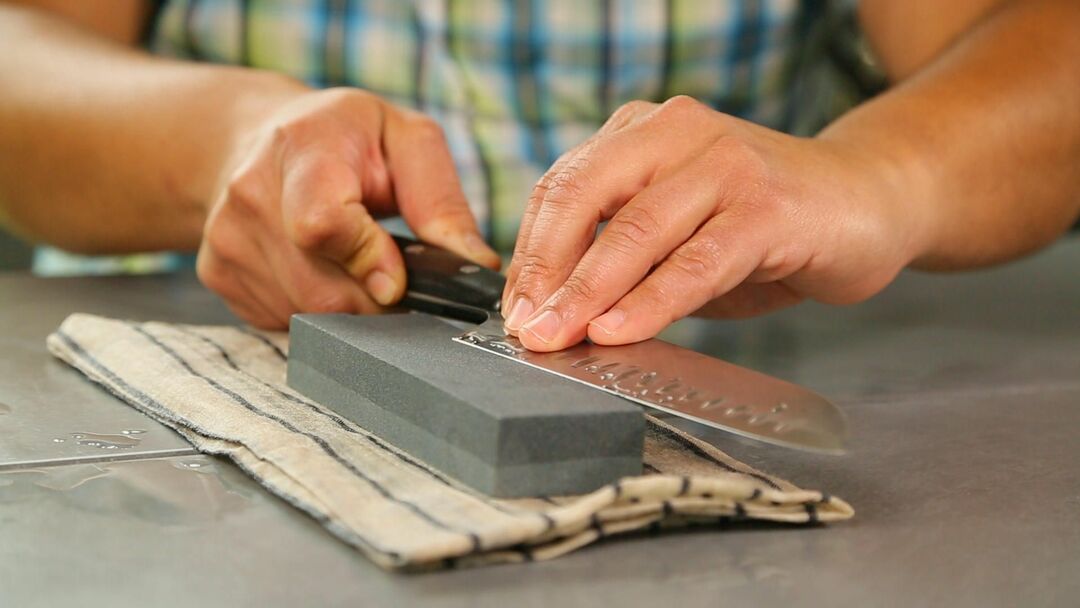
@ cnet.com
Steel rod
He is musat or steel. So-called sharpening steel, a metal bar sold with most knife sets. In fact, it does not sharpen, but sharpens the edge of a slightly dull blade.
Advantages:
- retains the sharpness of the blade for a long time;
- quick results;
- does not wear off.
Flaws:
- not suitable for too dull blades.
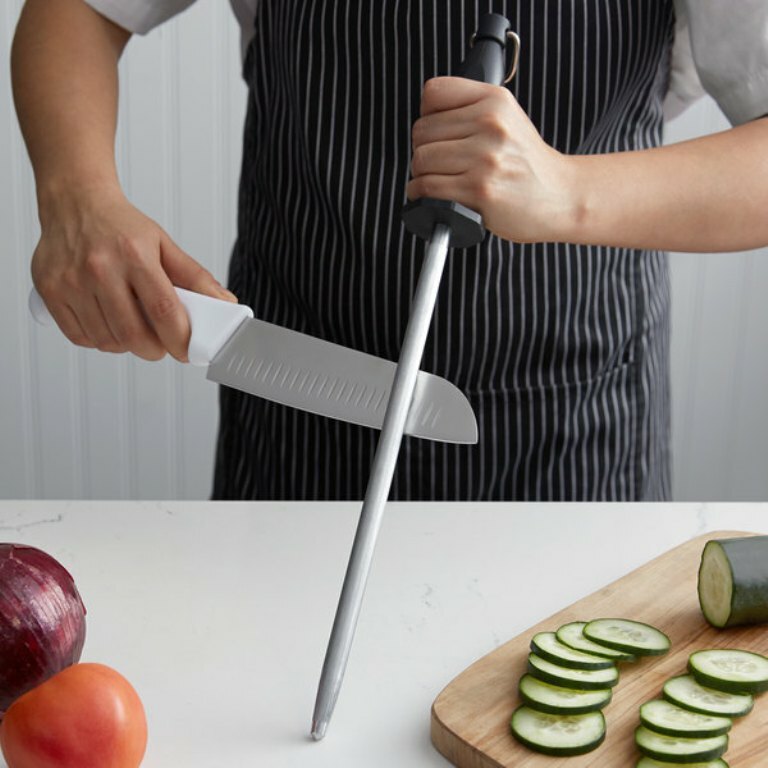
@ residencestyle.com
Mechanical sharpeners
Classic table-top devices that are compact, easy to use and safe.
Advantages:
- very easy to use;
- no additional skills required.
Flaws:
- it is impossible to pick up the sharpness of the movement, which does not allow sharpening the blade to perfect sharpness.
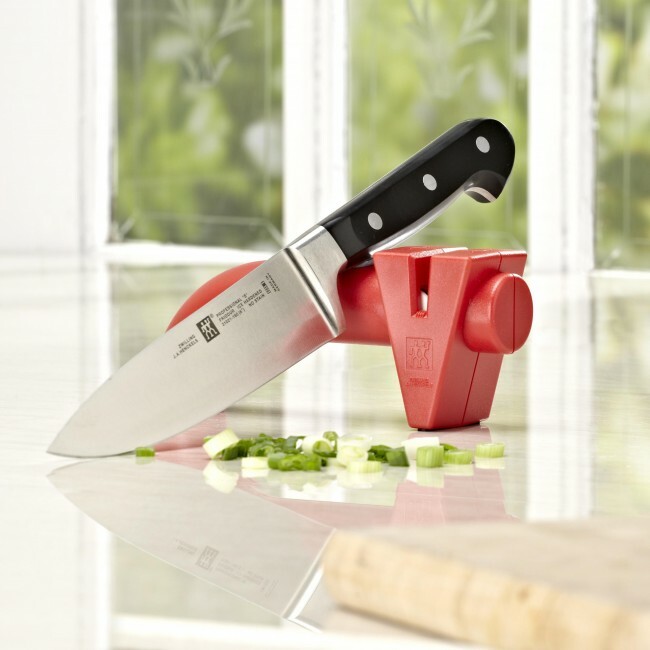
@ itchenstuffplus.com
Electric sharpeners
These are functional devices that are simple in design, but at the same time guarantee perfect sharpening quality. They are used for both steel and ceramic tools.
Advantages:
- excellent result;
- easy to use;
- a great option if you need to sharpen a large number of products.
Flaws:
- requires separate storage space;
- high price.
In some mechanical and electrical sharpeners, the angle of the sharpening is usually fixed. However, there are devices with an adjustable parameter.
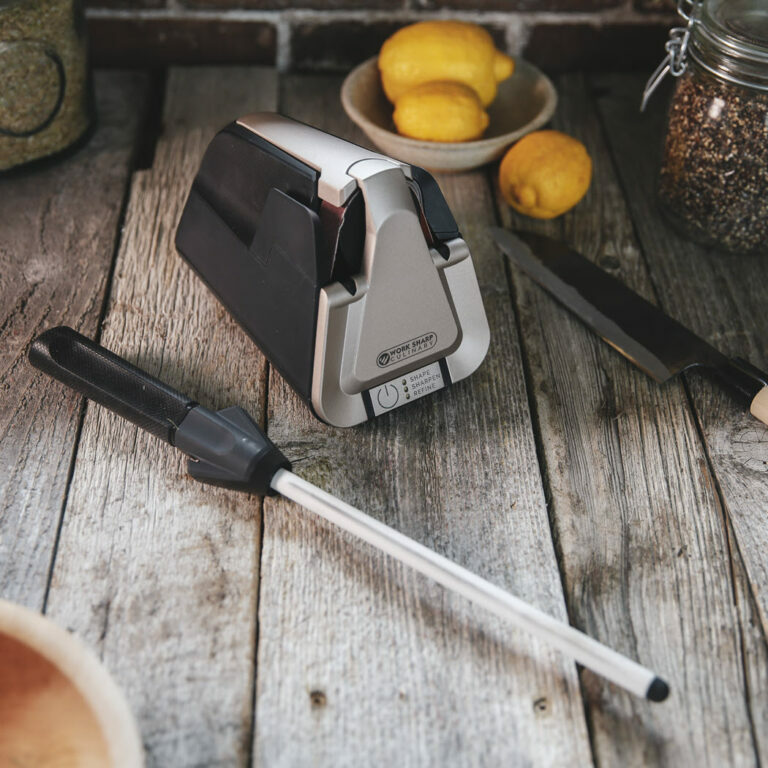
@ sassytownhouseliving.com
Sharpening angle of a kitchen knife
An angle of 20 ° is considered ideal, but experienced craftsmen recommend approaching this process with enthusiasm - given the type of knife and its scope.
So, the optimal sharpening angle should be:
- 10-20 ° - Japanese kitchen knives;
- 35 ° - shredder, fillets and knives for vegetables;
- 25 ° - knives for cutting and boning meat or fish, fillet knives for professional chefs;
- 25-30 ° - ordinary household knives;
- 55-60 ° - dining rooms.
You should also remember the unspoken rule: the smaller the angle between the blade and the stone, the sharper the tool will be, and the larger, the longer the cutting edge will remain sharp.
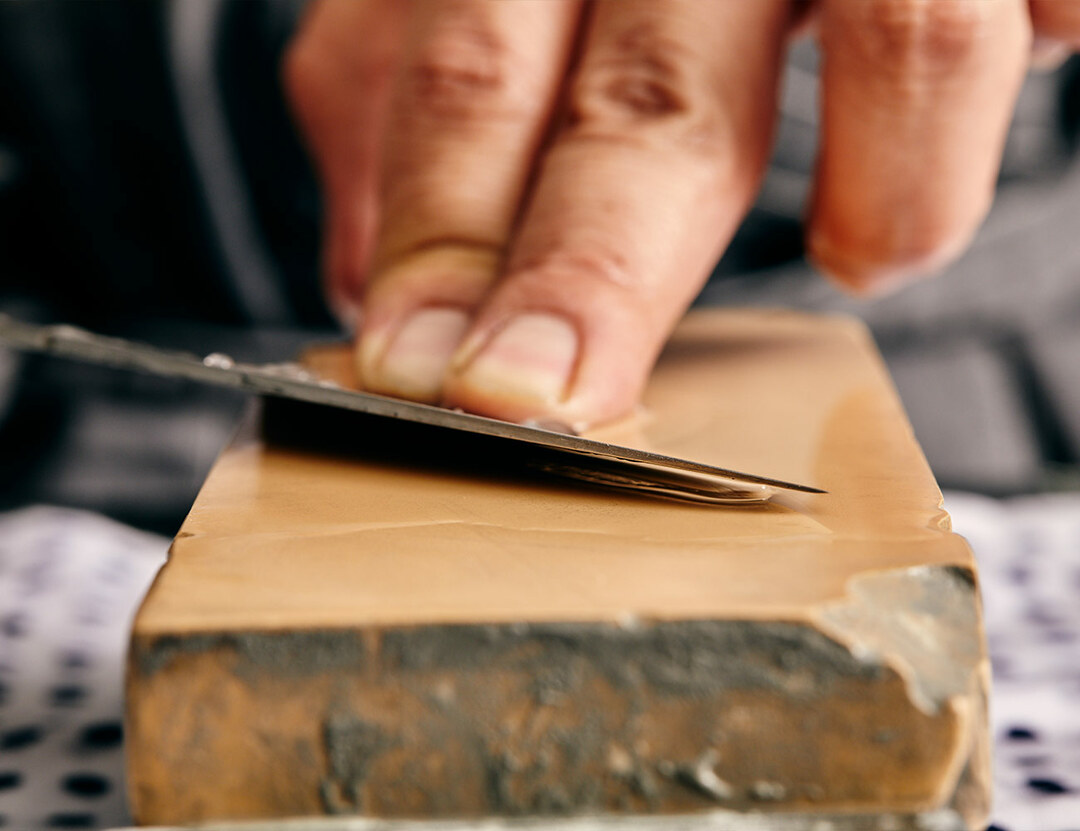
@ gearpatrol.com
Basic rules for sharpening
Next, we will talk about how to sharpen a knife using a sharpening stone, since mechanical and electrical devices practically do not involve human participation, and the steel rod is more designed for fine-tuning than for high-quality sharpening.
- Soak the stone in water until air bubbles stop appearing. This usually takes 10-12 minutes.
- Place it on a horizontal surface. Pay special attention to fixation. The stone should not move from side to side. If possible, secure it with something. Sometimes it is enough to place it on a rubber mat or wet towel.
- Holding the knife blade firmly at the selected bevel angle, gently but confidently draw the entire length of the blade away from you diagonally across the stone. Repeat several times - six to ten.
- You need to sharpen any device with careful movements, slightly raising the handle when the bar reaches the bend of the blade.
- You do not need to press the blade with great zeal, but if you gently drive on the sharpener, there will be no result - here you need to find something in between, the so-called golden mean.
- Sharpen the entire cutting edge until a small and even metal burr appears. Flip the knife over and repeat the process.
- After the surfaces are sharpened, you can start finishing them with a touchstone with a fine-grained structure. In other words, the steel must be sanded or the sharpness will not last long.
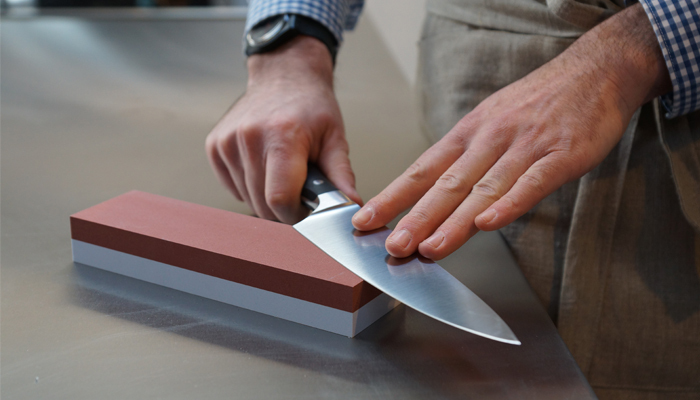
@ boroughkitchen.com
Remember to maintain a constant angle and even pressure.
In principle, you can sharpen a knife by alternating each side. You can even say that this way you will be more confident in the even sharpening of the cutting edge on both sides. However, you can use both methods - here it is more convenient for anyone.
Sharpening is a very responsible business and, in fact, not easy. If you doubt that you can choose the best angle of inclination, as well as do everything efficiently, then do not be lazy and take the devices to a special workshop. Yes, there you have to fork out a little, but the professionals will do everything accurately and accurately.

@ turwho.com
Subscribe to our Social Networks